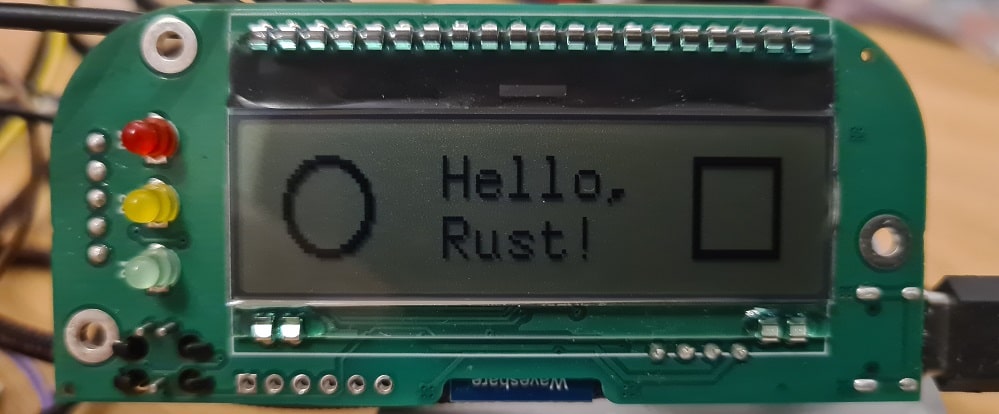Awesome
st7565
This crate aims to provide an embedded-graphics compatible driver for displays based on the ST7565 chipset.
Example
The following example is intended for the DOGM132W-5 display connected to an nRF52840 microcontroller.
Note the MODE_3 of the SPI. The DOGM132W-5 display expects the clock to be configured
with CPOL=1 and CPHA=1, which is also called SPI Mode 3.
// Create DOGM132W-5 spi bus
let spi_bus = hal::Spim::new(
peripherals.SPIM0,
hal::spim::Pins {
sck: Some(disp_scl),
mosi: Some(disp_si),
miso: None,
},
hal::spim::Frequency::M8,
hal::spim::MODE_3,
0,
);
let disp_spidevice = ExclusiveDevice::new_no_delay(spi_bus, disp_cs).unwrap();
let disp_interface = SPIInterface::new(disp_spidevice, disp_a0);
// Create DOGM132W-5 display driver
let mut page_buffer = GraphicsPageBuffer::new();
let mut disp = ST7565::new(disp_interface, DOGM132W5).into_graphics_mode(&mut page_buffer);
disp.reset(&mut disp_rst, &mut timer).unwrap();
disp.flush().unwrap();
disp.set_display_on(true).unwrap();
// Draw on it using the embedded_graphics library
Circle::new(Point::new(10, 6), 20)
.into_styled(PrimitiveStyle::with_stroke(BinaryColor::On, 2))
.draw(&mut disp)
.unwrap();
disp.flush().unwrap();
Note the DOGM132W5 object. This is the display specification that contains all the display specific configuration options that need to be applied to the ST7565 chip.
Further note the into_graphics_mode() call, which switches the driver from its initial
mode to the embedded-graphics driver mode.
The disp object can then be used as a DrawTarget in embedded-graphics calls.
After drawing something, a flush() call has to be issued to actually
send the modified data to the display.
Adding support for new ST7565 based displays
The example above uses the DOGM132W5 struct in the [ST7565::new()] call.
To initialize the ST7565 driver struct with a different display, a new display
specification has to be created. This can be done by creating an empty struct that
implements the [DisplaySpecs] trait.
For example, the definition of the DOGM132W5 struct looks like this:
pub struct DOGM132W5;
impl DisplaySpecs<132, 32, 4> for DOGM132W5 {
const FLIP_ROWS: bool = false;
const FLIP_COLUMNS: bool = true;
const INVERTED: bool = false;
const BIAS_MODE_1: bool = false;
const POWER_CONTROL: PowerControlMode = PowerControlMode {
booster_circuit: true,
voltage_regulator_circuit: true,
voltage_follower_circuit: true,
};
const VOLTAGE_REGULATOR_RESISTOR_RATIO: u8 = 0b011;
const ELECTRONIC_VOLUME: u8 = 0b011111;
const BOOSTER_RATIO: BoosterRatio = BoosterRatio::StepUp2x3x4x;
const COLUMN_OFFSET: u8 = 0;
}
The exact values for the respective display have to be taken from the display's manual.
If you created a specification for a new display, please open a pull request on https://github.com/Finomnis/st7565/pulls to make it available to the public.





